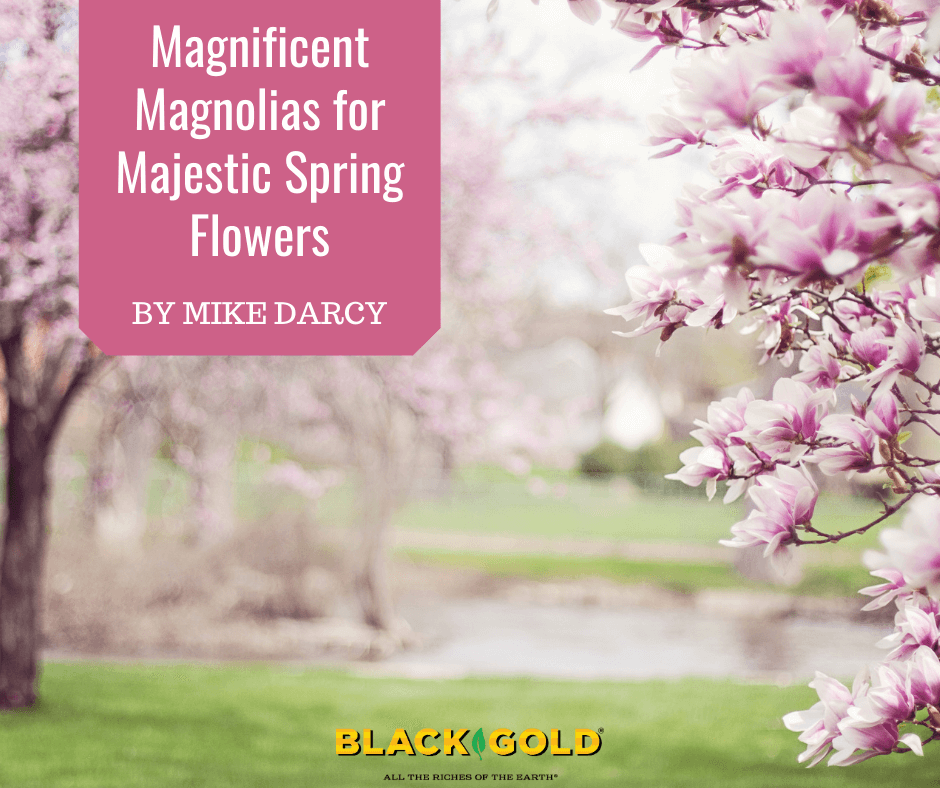
I will always remember the early spring day in the 1960s when I exited the freeway into a wooded neighborhood and first saw saucer magnolia saucer magnolia (Magnolia x soulangeana, 20-25 feet, USDA Hardiness Zones 5-9, a cross between M. denudata x M. liliiflora) in full bloom. It was a spectacular introduction to the genus Magnolia.
Since that day, my interest in magnolias has not diminished and actually continues to grow each spring. In my own garden, I have several and would have more if it were not for space limitations. I regularly visit our local arboretum, the Hoyt Arboretum of Portland, Oregon, in the spring to see the Magnolia collection. There are also several area private gardens with extensive plantings of Magnolias, and I am a regular visitor.
About Magnolias

Generally, magnolias are not small trees. Most of them will reach at least 25 feet and many have broad branches. Roger Gossler, of Gossler Farms Nursery in Springfield, Oregon, has an extensive display garden of magnolias, and he told me that he has consistently asked the hybridizers to please breed magnolias that are smaller because many of today’s customers are looking for trees in the 10-15-foot range. (The classic varieties in the Girls magnolia group, bred at the National Arboretum, have many smaller trees with fantastic blooms, but several are no longer on the market, and there is always a need for great new varieties for smaller gardens.)

For choosing the best Magnolias for your particular area, check varieties that local garden centers are offering. I also think that one of the best tests for specific varieties is to see what other gardeners are growing where you live. Be sure that they are reliably hardy where you live and not susceptible to early cold snaps in your area, which are known to sometimes freeze the spring buds and flowers.
Most Magnolia’s will grow in a full sun location but many also benefit from some protection from the hot afternoon sun. They like organic-rich and well-drained soil. The addition of Black Gold Garden Compost Blend would be ideal at planting time, and a yearly top-dressing is also beneficial. Magnolia roots tend to be fleshy so transplant them carefully while being sure to lightly tease apart any dense, pot-bound roots.
My Favorite Magnolias

There are so many different varieties of Magnolias, and I am only able to list a very small number of them here. As I mentioned earlier, check to see what your neighbors are growing or local garden centers are carrying. It’s a great way to ensure that the trees you plant will grow well in your garden.

One of the earliest blooming magnolias, which I have in my garden, is star magnolia (Magnolia stellata, 15-20 feet, USDA Hardiness Zones 4-8). This is one of the smaller growing types, my plant is probably 20 years old and perhaps 10 feet tall. The fragrant white flowers are small, 3 inches across, and appear on the stems before the leaves. The plant is a profuse bloomer and is covered with flowers in late winter.
Another that I have in my garden is Yulan magnolia (M. denudata, 30-40 feet, Zones 6-9), which has fragrant, ivory, goblet-shaped flowers that are 4-6 inches across and open before the leaves appear. Often a few flowers will appear during the summer. A bonus with this tree is that in late summer, red cone-like fruits appear and from a distance look as though the tree is in bloom.

Yellow is a rather elusive color in magnolias and ‘Elizabeth’ (15-30 feet, Zones 5-9) has set the standard since it was introduced and patented by the Brooklyn Botanic Garden in 1977. It has light yellow, fragrant flowers that are 6-7 inches across and often appear before the leaves. Another yellow is M. ‘Butterflies’ which is similar but has smaller, (3-4 inch) flowers.
I would be remiss without mentioning the one that, when in bloom, attracts the most attention in my garden. Magnolia ‘Black Tulip’ (15-20 feet, Zones 5-9) has one of the darkest blooms of all the hybrids. As the name indicates, tulip-shaped flowers that are very dark purple-red appear on stems before the leaves. This makes a spectacular display.
Here I am offering just the tip of the iceberg of available Magnolia selections. I have only mentioned some of those that bloom in early spring, but there are plenty of other varieties that bloom in summer, such as southern magnolias (Magnolia grandiflora) and Virginia magnolia (Magnolia virginiana), so don’t stop with spring!

